Managed IT Services and in-house IT both have their own set of advantages and disadvantages. The choice between the two depends on various factors, including the specific needs and preferences of the organisation. Here are some pros and cons for each:
Managed IT Services – Pros
- Cost Savings:
- Reduced Overheads: Outsourcing IT services can often be more cost-effective than maintaining an in-house IT department, as it eliminates the need for salaries, benefits, and other overhead costs associated with hiring full-time staff.
- Expertise and Specialization:
- Access to Specialized Skills: Managed service providers (MSPs) often have a team of specialists with diverse skills, providing a broader range of expertise compared to a small in-house team.
- Scalability:
- Flexible Resources: Managed IT services can scale up or down based on the organisation’s requirements, allowing for flexibility in adapting to changing business needs.
- 24/7 Support:
- Continuous Monitoring: Many MSPs offer 24/7 monitoring and support, ensuring prompt response to issues and minimizing downtime.
- Focus on Core Competencies:
- Allows Focus on Core Business: Outsourcing IT allows the organisation to focus on its core competencies without the distraction of managing IT infrastructure and support.
Managed IT Services – Cons
- Dependency on External Provider:
- Lack of Direct Control: The organisation may have less control over day-to-day operations and decision-making, relying on the managed service provider.
- Communication Challenges:
- Potential Communication Issues: There can be challenges in communication and coordination, especially if the MSP is located in a different geographic location.
- Security Concerns:
- Data Security Risks: Entrusting sensitive data to a third party raises security concerns, and organisations need to ensure that the MSP has robust security measures in place.
In House IT – Pros
- Direct Control:
- Greater Control: Having an in-house IT department allows for direct control over all aspects of IT operations, facilitating immediate decision-making and responsiveness.
- Knowledge of Business Processes:
- In-Depth Understanding: In-house IT teams often have a better understanding of the organisation’s specific business processes, which can lead to more tailored solutions.
- Security Management:
- Enhanced Security Control: Organisations can have greater control over their security measures and can implement customised security protocols.
- Cultural Alignment:
- Cultural Integration: In-house teams are more likely to be closely aligned with the organisation’s culture and values.
In-House IT – Cons
- Higher Costs:
- Increased Overheads: Maintaining an in-house IT team can be more expensive due to salaries, benefits, training, and infrastructure costs.
- Limited Expertise:
- Skill Constraints: In-house teams may have limited expertise in certain areas, especially if the organization requires specialized skills.
- Limited Scalability:
- Challenges in Scaling: Scaling up or down can be challenging for in-house teams, as it may require hiring or laying off staff, which can be time-consuming and costly.
- Workforce Management:
- Human Resource Challenges: Managing and retaining skilled IT professionals can be a continual challenge.
In summary, the decision between managed IT services and in-house IT depends on factors such as budget constraints, the need for specialised skills, control preferences, and the overall strategic goals of the organisation. Some organisations may even opt for a hybrid approach, combining both models to achieve a balance between control and flexibility.



2 thoughts on “Managed IT Services Or In-House IT : Pros and Cons”
Comments are closed.